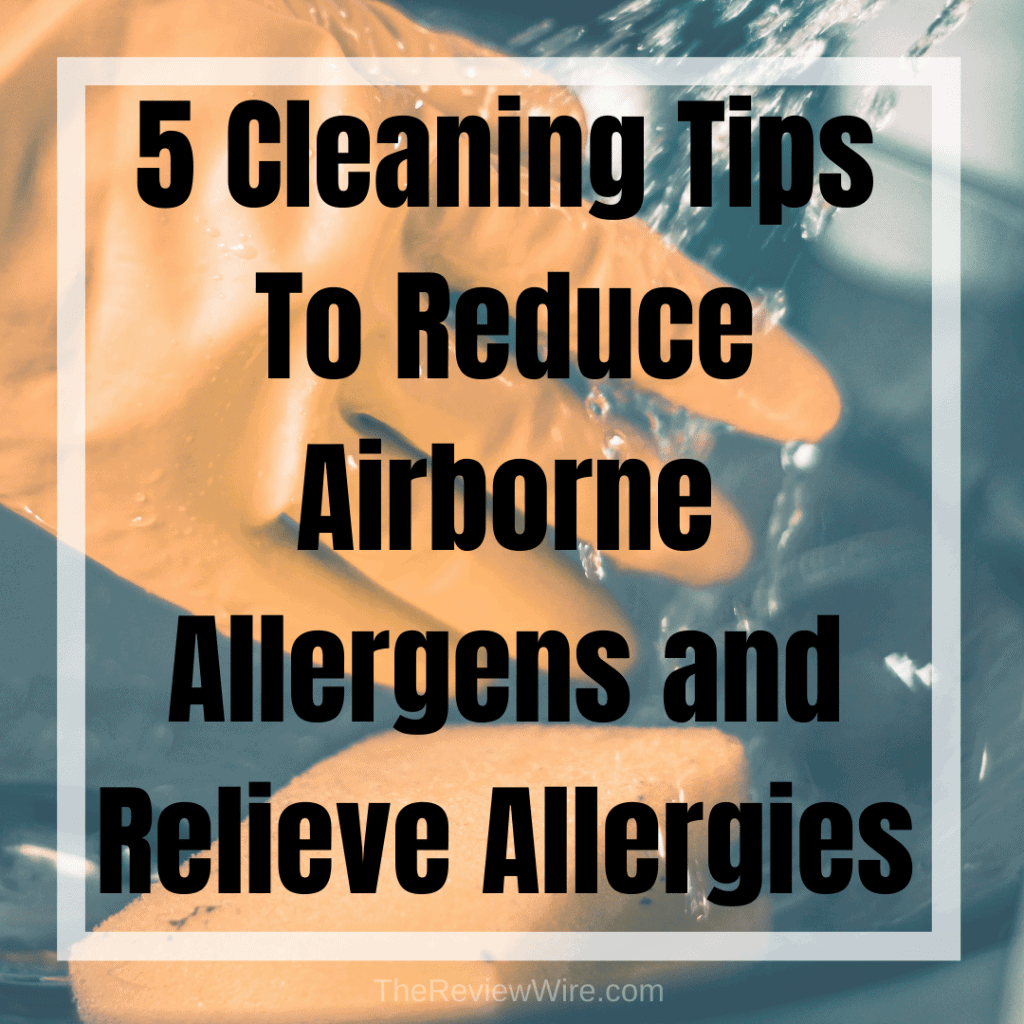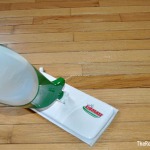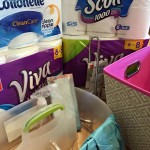This post may contain affiliate links. The Review Wire may collect a share of sales if you decide to shop from them. Please see my full disclosure policy for details.
When you or a family member suffers from allergies, it can get tricky to maintain an allergen-free home.
Fortunately, you can reduce airborne allergens and relieve allergies by cleaning your home properly. With the proper tools and cleaning products, you can trap allergens, preventing exposure to what would otherwise trigger allergic reactions. You can also download this cleaning checklist!
1. Use the Right Cleaning Tools and Products
The first step is to choose the correct cleaning tools and environmentally friendly cleaning products. Some of the best tools to help you clean every part of your home and get rid of allergens include:
- Vacuum cleaners. Invest in a HEPA (high-efficiency particulate air) filter vacuum cleaner. These pleated filters are highly efficient at collecting contaminants and trapping dust, pollen, pet dander, dust mites, and other airborne particles. You may want to invest in a small vacuum cleaner with a crevice tool or even a handheld model for tight areas.
- Mops and cleaning cloths. Microfiber cloths and mops attract dust better than paper or cotton. To help attract more dust, dampen the cleaning material lightly.
- Dust wipes. Disposable dust wipes attract dust and hold it until disposal, making them indispensable for people with allergies.
- Hand gloves and protective masks are also helpful. However, avoid latex gloves. Instead, go for rubber with cotton lining. You can also wear washable or disposable face masks.
It is also essential to choose cleaning products that best help you reduce allergens. Your laundry products should include unscented and dye-free detergents. Studies suggest that, sometimes, the dye can cause skin irritation.
Whenever possible, use natural products or unscented cleaners. Baking soda, lemon juice, and distilled white vinegar are natural cleaning agents for your home.
2. Clean Your Bedroom Regularly
To reduce airborne allergens and relieve allergies, wash your bedsheets, blankets, pillowcases, and duvet cover in hot water at least once a week (at least 130 degrees Fahrenheit). It will keep your bedding and room clean, fresh, and allergen-free.
Remember your pillows. A common misconception is that the pillowcase protects the pillow from dust and skin cells, but it doesn’t. These make their way to your pillow, so wash it every three months. The same applies to your duvet and items like bed skirts, canopies, and curtains.
Consider using dust mite-proof covers on your mattresses and pillows to relieve allergies. Also, opt for washable curtains made of synthetic fabric or plain cotton.
Remember to wash the bedroom and all the tools and furniture in it weekly. You can use hand tools to vacuum your upholstered furniture. Vacuum the floors and ensure you don’t leave even the tiniest spaces untouched.
Finally, solid tile or hardwood flooring is better for allergen reduction than full-room carpet. Keep your four-legged friend away from your bedroom, too.
3. Remove Mold and Mildew
Mold and mildew are allergens in bathrooms and other damp areas such as basements. These should be removed as soon as they develop.
Stopping and removing mildew growth should be easy with a commercial mildew cleaner, hydrogen peroxide, or chlorine bleach. You can expect good results if you follow the instructions and don’t mix the chemicals.
Put on gloves and use a stiff brush to scrub the affected areas.
For tight corners, use paper towels saturated with your cleaning solution. Allow the towels to remain positioned for about an hour before scrubbing and rinsing.
Follow these tips to prevent mold and mildew from building up again:
- Towel-dry your shower enclosure or tub every time you use it.
- Repair your sink, tub, toilet fixtures, and showerhead immediately if you detect a leak.
- Use an extractor fan while showering or bathing
- Always dry your towel after use
- Wash bath mats and curtains, and wash rugs regularly.
4. Clean Your Living Areas Regularly
Prioritize keeping your living area free of common allergens like dust mites and pet dander. To do so, clean regularly, starting at the top, just like in your bedroom. This will allow the vacuum or damp mop to capture the allergens and dust.
Dust your light fixtures, blinds, and ceiling fans. Using your hand tools, vacuum or wash the drapes. Also, clean the window sills and mantles among all other horizontal surfaces. Don’t forget to remove all residues in the fireplaces.
So, how often should you clean your living room? At least once a week. For the carpet, it’s best to vacuum daily to help reduce pet dander. Don’t forget to wipe down your furniture to remove dust while vacuuming upholstery.
Keep your pet away from furniture, as this can relieve allergies.
Do you have plants indoors? You need to dust your artificial plants weekly. For natural plants, cover the soil with marble or rocks to prevent the growth of molds.
Lastly, to freshen the air in the living room, use natural air fresheners instead of chemical ones, such as essential oil diffusers, fabric spray, and scented cleaning vinegar.
5. Keep Allergens Out of Your Home
The best way to reduce allergens and relieve allergies is to block them from getting inside. Below are some tips to help keep away allergens:
- Leave your shoes and outerwear outside to prevent pollen from coming in.
- Don’t smoke or allow anyone to do so near or inside your home.
- To discourage mold spores and dust mites, maintain indoor temperatures above 68 degrees Fahrenheit but not exceeding 72 degrees Fahrenheit. Also, check that the humidity doesn’t exceed 50%.
- Throw away expired or moldy food, and regularly clean the refrigerator, sinks, and countertops.
- Cover all the foods to prevent insect droppings.
Keeping your home clean, fresh, and allergen-free takes time and effort. Hopefully, these cleaning tips for allergies will help keep airborne allergens at bay and relieve allergies.
Whether it’s your living areas, kitchen, bedroom, basement, bathroom, or storage areas, leave nothing to chance in reducing pollen, pet dander, mold and mildew, and dust mites. It’s less just about cleaning, but more about cleaning the right way.









SINCE I HAVE ALLERGIES, THIS ARTICLE’S TIPS ARE QUITE RELEVANT TO ME.
WOW I have learned so much in this one post…. thank you!!!
I don’t have allegries. Ever time I clean I get all that stuff in the air and I cough, sneeze and have breathing problems for hours.
Just the one tip about wearing a mask will save me so much and the damp cloth for dusting……….. going to use all of these
Thanks for sharing! I’ve found that using a humidifier and getting carpet cleanings really helps cut down on my family’s allergies each winter!
Cleaning for my allergies doesn’t help because I have seasonal allergies .
Awesome content and cleaning tips that every home owner can follow through it.